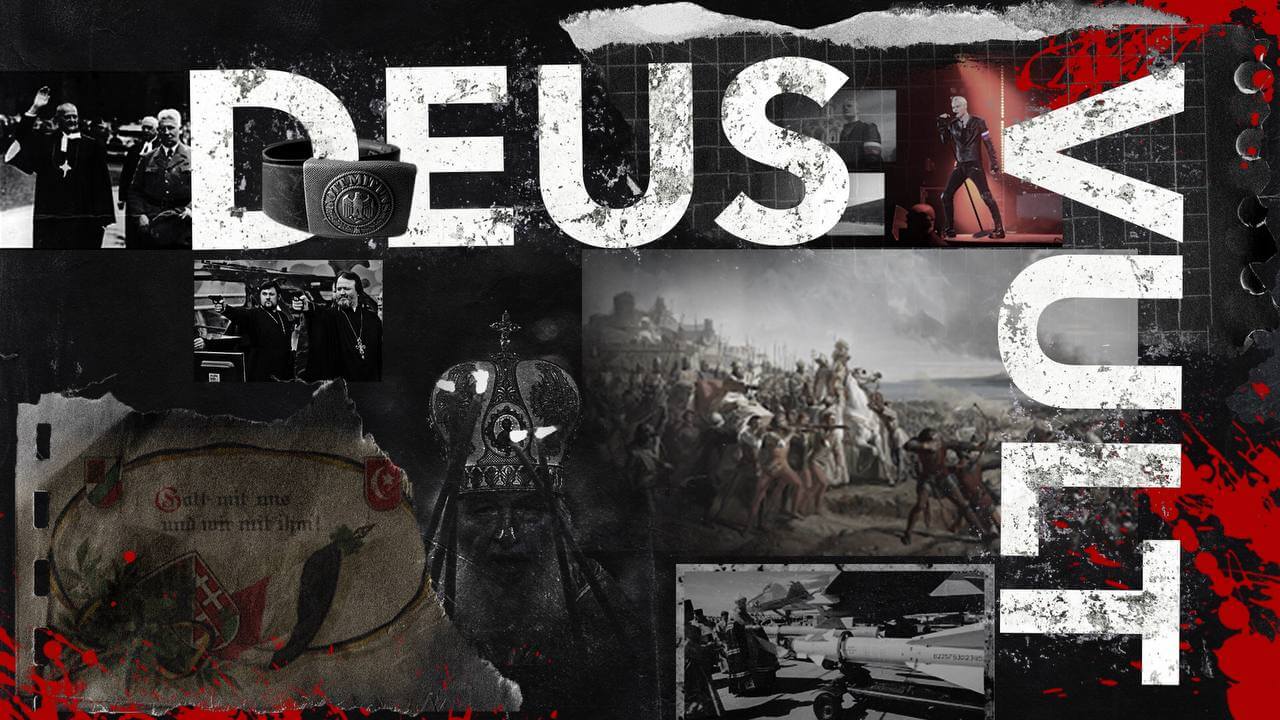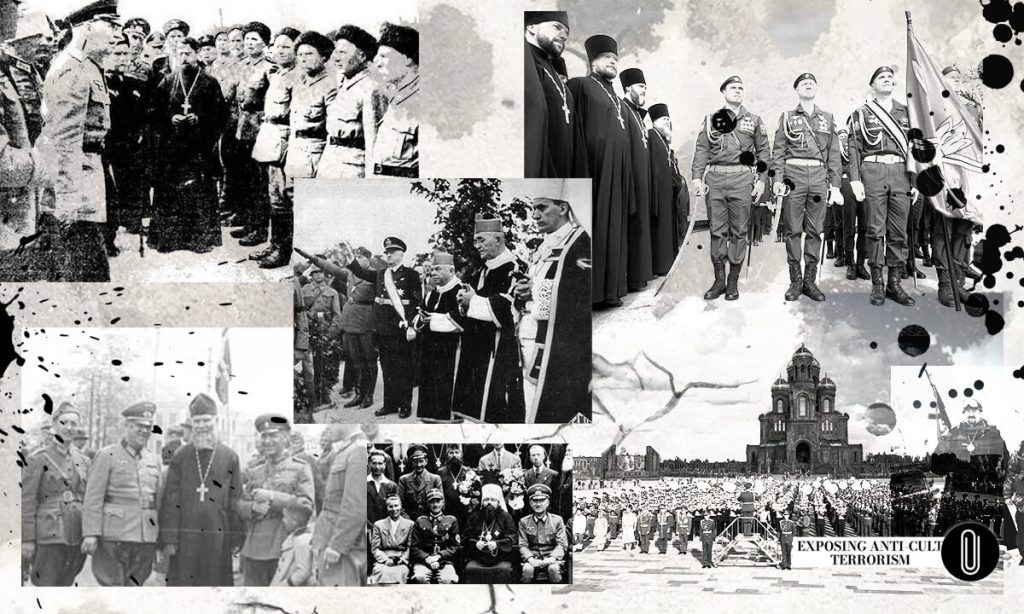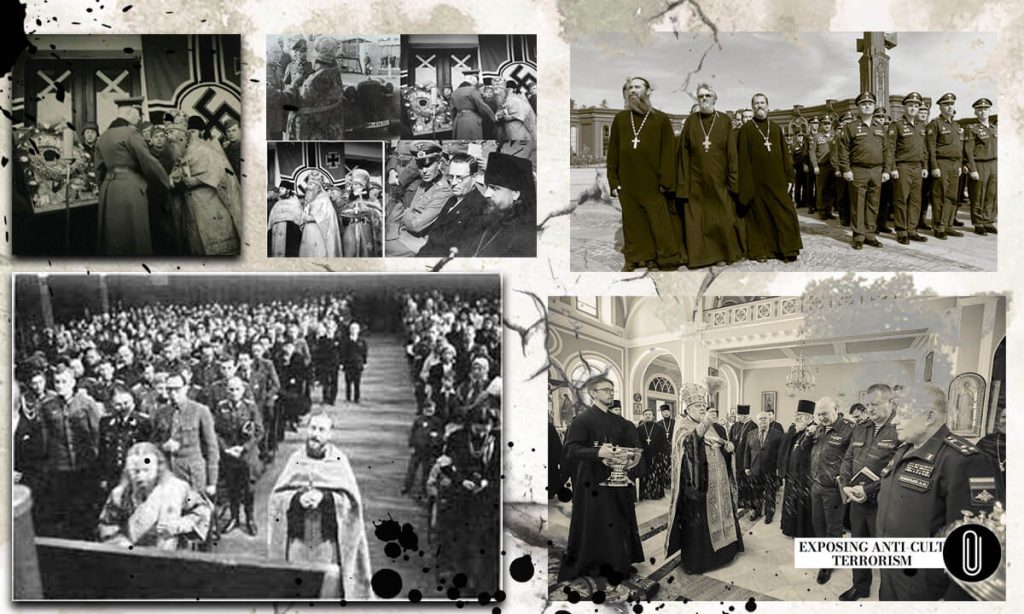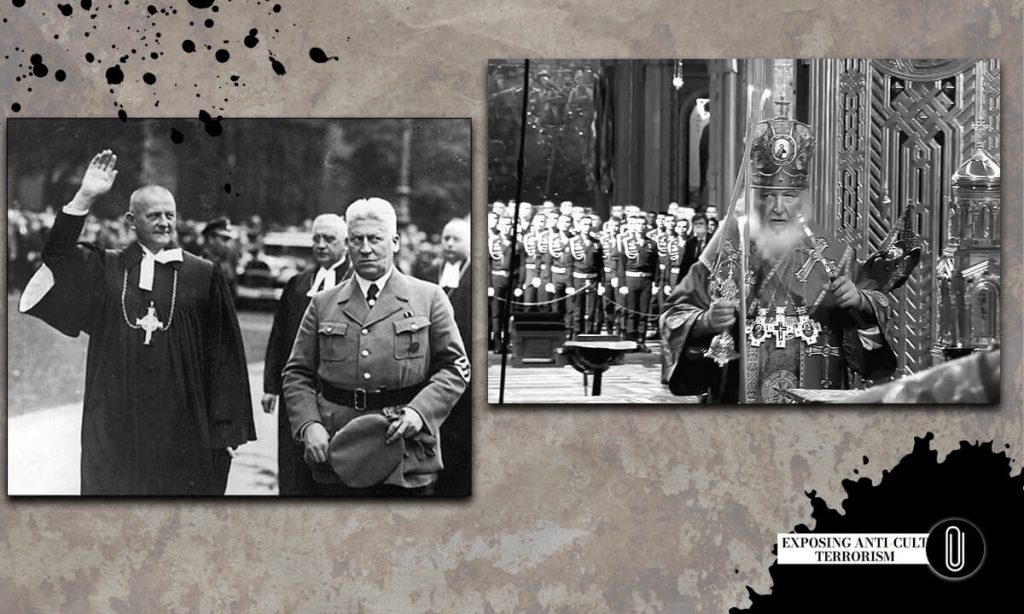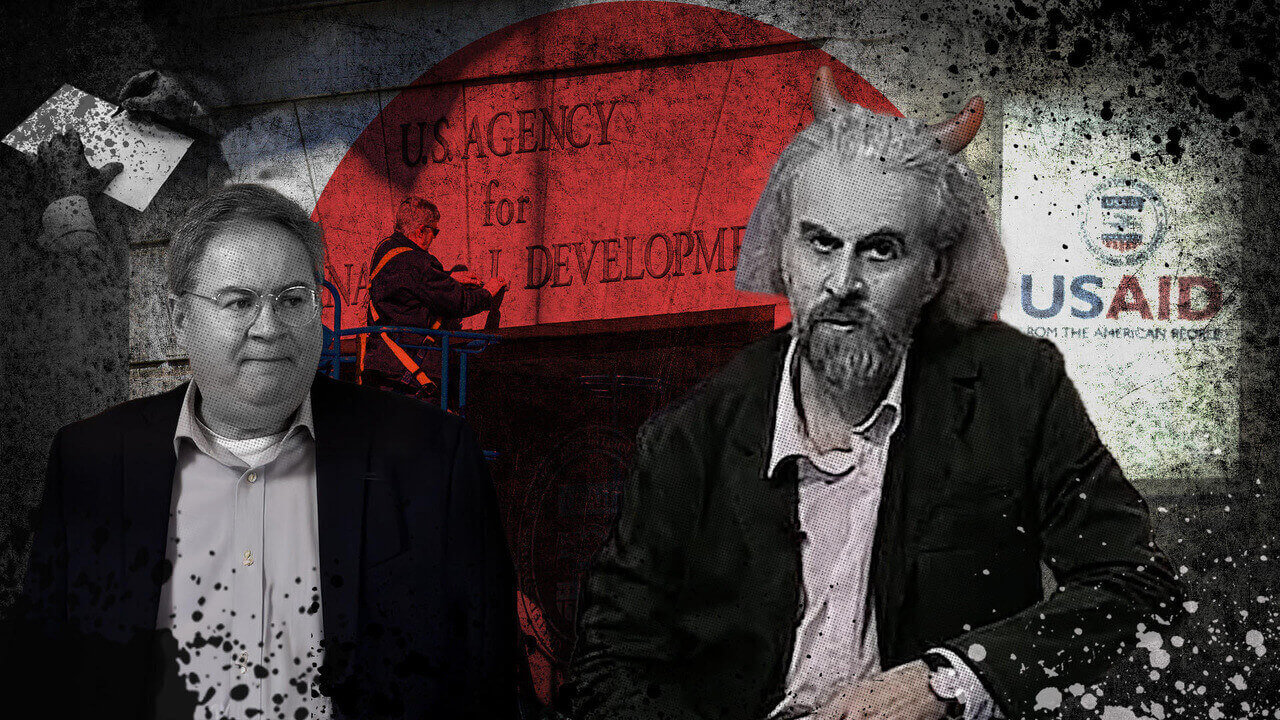Continuing the theme of the Nazism rebirth and the orchestration of a major civilizational war by global anti-cultism, it is hard not to notice that nearly all large-scale military campaigns in history have had religious undertones. Strangely enough, it was often with the strict approval of clergy that chaos was sown, invasions were launched, and people were killed. In many cases, a priest’s blessing became the decisive factor that silenced a person’s critical thinking, expanded the boundaries of moral and ethical norms, and elevated blatant evil into a supposedly righteous cause. An individual started shifting responsibility for their actions onto divine will communicated through the “mediating” link of the clergy. They were told, “God wills it.” They were convinced, “God is with us.” With that, they felt justified in carrying out any orders given by their commanders and generals.
The rules of hierarchy were laid out in the military code, and conscience was pushed aside. For how long? Not long. When it was all over, some were left facing accusations of crimes against humanity, while others lived with traumatized psyches and nightmares for the rest of their lives. All were guilty, and all faced consequences! Yet, somehow, the blame was never placed on those who quietly nudged people to step over the norms of morality and dive into the abyss of war. The clergy always remained unscathed.
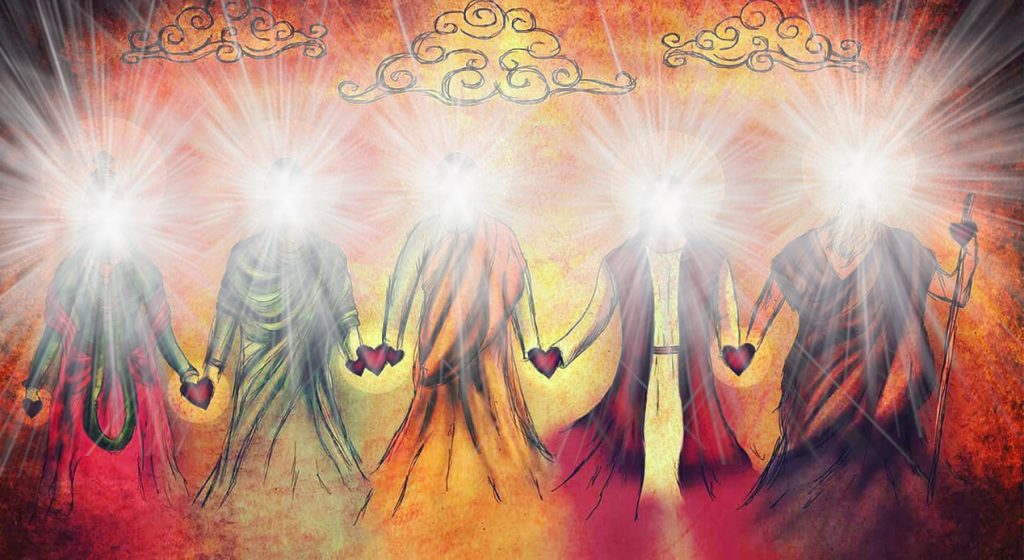
There’s a common observation: Krishna was not a Krishnaite, Buddha was not a Buddhist, and Jesus Christ was not a Christian. They were teachers of Love. Their teachings about God essentially boiled down to the formula “Love God and your neighbor as yourself.” This much is clear. However, from these simple seeds of truth, complex religious doctrines emerged, with church statutes, dogmas, and countless interpretations. Each new generation of followers tirelessly reinterpreted the truth, making it increasingly difficult to discern what God truly wants from us and what the purpose of humanity is. Meanwhile, people have come to believe that religion is the essential restraining force that prevents spiritual and moral collapse. But one question remains unanswered: why do priests continue to bless war?
It seems, the answer is simple. Priests are ordinary people, just like you and me, and they blindly obey their higher authorities, much as we sometimes do. One of the key doctrines of the church, after all, is unquestioning obedience to religious superiors. Whoever is highest up “calls the tune.” But what few realize is that at the top of the hierarchical ladder of church authority sits global anti-cultism. Its secret puppet master’s hand has reached into and manipulates all the world’s religions. This is far from conspiracy theory, dear reader — it’s time to speak the language of facts. And that is exactly what we are doing!
Crusades – “God wills it”?
The Crusades were a series of religious military campaigns from the 11th to 15th centuries launched from the kingdoms of Western Europe, initiated and directed by the Catholic Church against Muslims, pagans, and heretics (such as the Cathars). The idea of the Crusades eventually extended beyond Europe, seeking religious justification for the conquest of the New World in the 15th and 16th centuries. There were more than ten Crusades in total. Over four centuries, the death toll reached into the millions. But let’s return to the origin. Who initiated the Crusades? Primarily, it was the pontiffs — the popes of Rome.

Robert the Monk, who rewrote Gesta Francorum 1 around the year 1120, added an account of Pope Urban II’s speech at the Council of Clermont in 1095, of which he was an eyewitness. The climax of the speech was Urban’s call for orthodoxy, reform, and submission to the Church. The Pope called on Western Christians to come to the aid of the Greeks in the East. It was during this fiery speech that the slogan “Deus vult” 2 (Latin for “God wills it”) was born. Other translations include “God’s will” or “God desires it.”
Robert also reports that the phrase “Deus lo vult” was initially shouted as a joke by Bohemond’s soldiers during their exercises but later became a true battle cry, which Bohemond interpreted as a divine sign.
The Crusaders would go on to use this cry throughout the First Crusade, committing atrocities and killings in the belief that they were serving some highest divine purpose.
God is with us!
The battle cry “God is with us!” has been known for a long time. It was also used by the Roman soldiers (Nobiscum Deus in Latin) during the Byzantine Empire.
Its widespread use as a slogan emerged during the Thirty Years’ War (1618–1648) — a lengthy military conflict that engulfed all of Europe, except for Switzerland and Türkiye. The phrase also served as a slogan for Gustavus Adolphus (or Gustav II Adolf), the King of Sweden, who ruled from 1611 to 1632.
By 1847, the slogan had been engraved on the belt buckles of Prussian army soldiers, from 1919 on the buckles of the Reichswehr, and from 1935 on the belt buckles of Hitler’s Wehrmacht.
Gott Mit Uns
During World War I, the phrase “Gott mit uns” (“God [is] with us”) became the battle cry of German soldiers. Displayed on military equipment such as belt buckles, placed prominently in city centers, printed on postcards, like the one shown below, and inspiring countless war poems and songs, it reflected the deeply ingrained belief of German leadership and the hopes of the German people for a bright future. 3
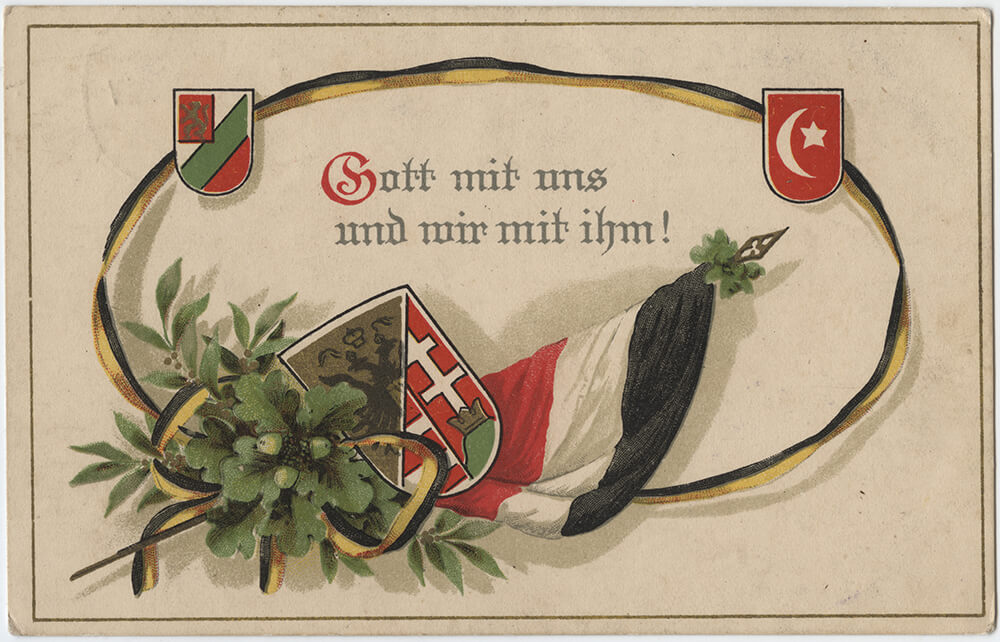
As seen on this postcard, the unifying belief that God was acting through the German Empire extended to its allies: Austria-Hungary, Bulgaria, and the Ottoman Empire. The postcard depicts the German flag, a double shield with half of Germany’s black eagle coat of arms and half of Austria-Hungary’s coat of arms, as well as the coats of arms of the Ottoman Empire and Bulgaria in the upper corners. The central text reads, “Gott mit uns und wir mit ihm!” (“God is with us, and we with Him!”), proclaiming that by uniting with Germany, these countries were now also destined for God’s righteous cause.

“Gott mit uns” (“God [is] with us”) became the motto inscribed on the symbols and heraldry of the German Empire, later widely adopted by Nazi Germany. In particular, it was stamped on soldiers’ belt buckles.

We’ve already mentioned the influence of anti-cultist ideas on Adolf Hitler’s worldview and their role in the formation and consolidation of the fascist regime in the article “Anti-Cultism During the Rise of Fascist Germany.” You can find more detailed information on this in The IMPACT documentary, which has been recently released online. Incidentally, there has been disturbing news that several popular international YouTube channels with millions of subscribers were recently deleted after posting this documentary. This telling fact points to one thing: the information in The IMPACT clearly alarmed global anti-cultists, and we are witnessing their response.
So, what is the unimaginable paradox in the current situation with the motto “God is with us”?
We Are Russians, God Is With Us!
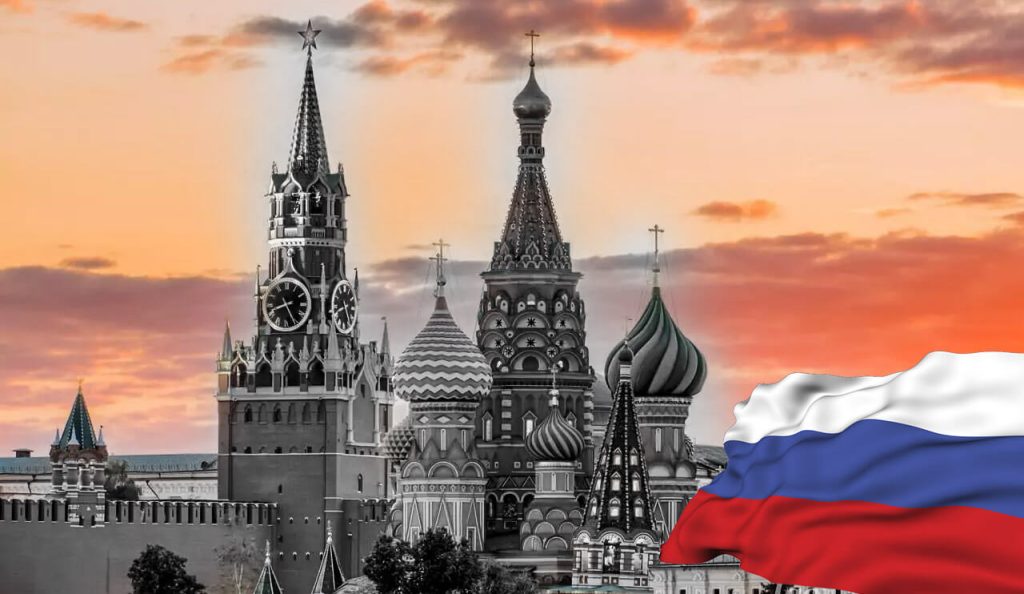
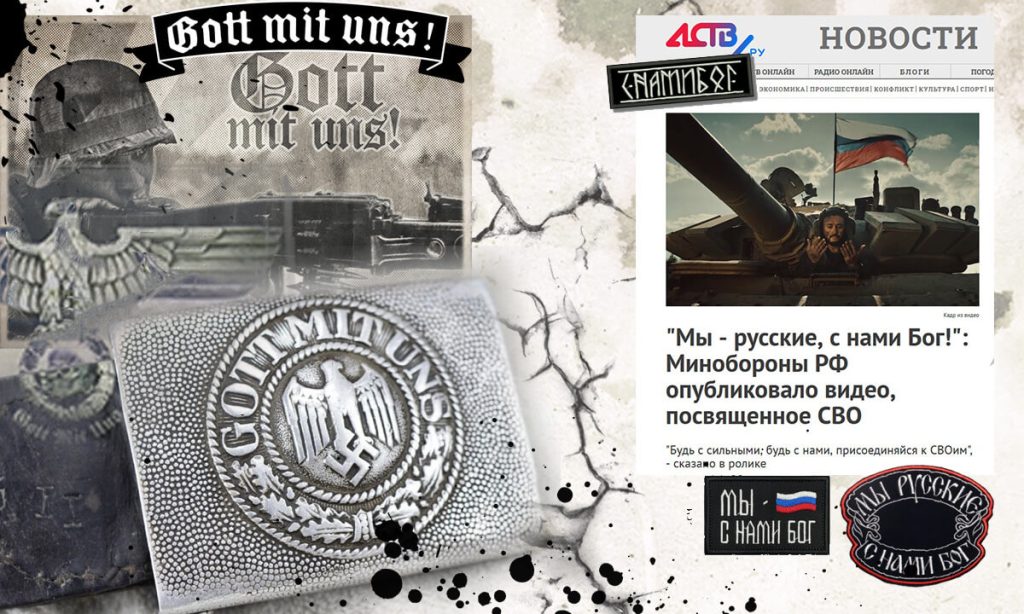
Eighty years after the end of World War II, this religious slogan has resurfaced once again, this time as part of military propaganda. And where do you think? In modern-day Russia! It is with bitter irony that we can observe how this slogan, as if passed like a baton from the Nazi regime of Germany, has now been adopted by a country that suffered the most from that very regime and endured the greatest human losses. Just as the Germans once used it as military occupiers, today the Russians are using it as they occupy the foreign territory of Ukraine.
Isn’t that astonishing?
Drawing historical parallels between Nazi Germany and contemporary Russia reveals numerous disturbing similarities, almost as though these two military campaigns were planned and launched by the same fascist ideologues. In fact, Egon Cholakian addresses this in detail in his latest video “The Crossroads.” He conducted a broad comparative analysis and provided us with ample material for reflection. Based on the information he presented, we have the opportunity to further delve into this topic and uncover even more shocking similarities. And we will definitely talk more about this.
The slogan “God is with us” is once again being heard in conversations, it’s visible on patches, and, most disturbingly, it’s firmly implanted in the minds of the Russian population, who are ready to conquer, kill, and seize foreign territory. At first, they believed they were defending themselves, and then, that Ukraine is now their territory. Let’s recall that in 1991, following the collapse of the Soviet Union, 15 independent states were formed, including Ukraine. The Belovezha Accords stated that the USSR, as a subject of international law and a geopolitical reality, ceased its existence and declared the establishment of the Commonwealth of Independent States. However, nearly thirty years later, on February 24, 2022, Russian President Putin questioned Ukraine’s independence in his morning address and labeled the invasion a “special military operation,” the only term allowed by Russian censors. For over two years now, this senseless, bloody war has dragged on, with the number of casualties rising every day as Ukrainian cities are subjected to daily missile attacks. Yet, the true goals and objectives of the “special military operation” remain unclear to many.
The slogan “We Are Russians, God Is With Us” gained traction in the early 2000s during the rise of Russian nationalist movements. In 2014, during the escalation of conflict in the Donbas, local residents and Russians used it as they went off to fight. Now, under this banner, Russian contract soldiers and mobilized troops are being sent to Ukraine. “We Are Russians, God Is With Us!” is increasingly seen on propaganda posters, various types of merchandise such as mugs, stickers, t-shirts, patches, and so on.

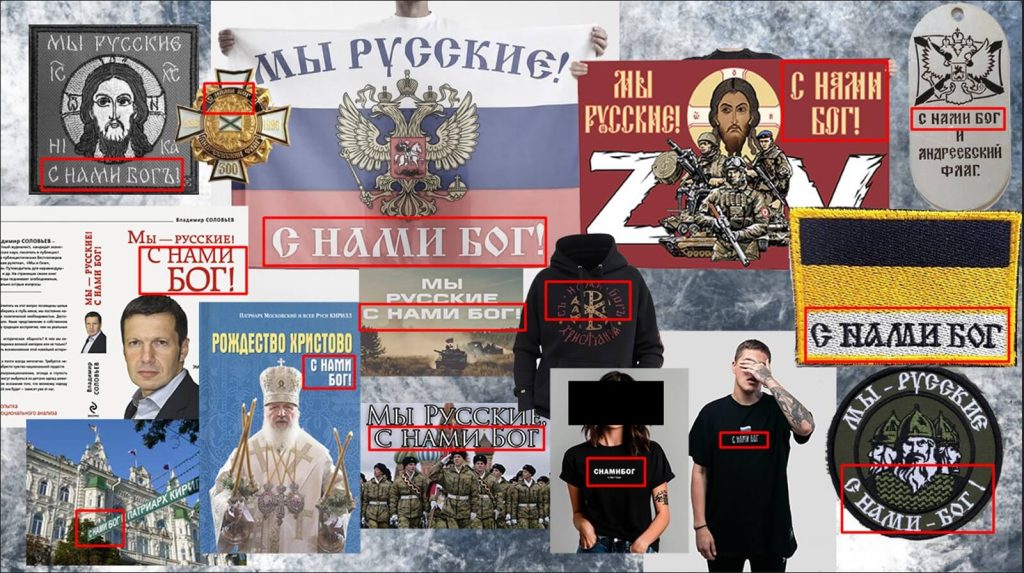
Today, in Russia, the religious and patriotic slogan “We Are Russians, God Is With Us!” has become a key element of military propaganda. Yaroslav Dronov, aka Shaman, is often called the main symbol of the war. Since the beginning of Russia’s aggression against Ukraine, he has repeatedly performed at Kremlin-organized concerts, including events celebrating the war’s anniversaries, and given concerts in illegally occupied regions of Ukraine, including for the Russian Armed Forces. He has been nominated for various awards. Moreover, in 2023, Dronov became a trusted representative of President Putin in the 2024 presidential elections.
It must be said that manipulating public consciousness through entertainment and the arts is the fastest way to implant and spread necessary ideological narratives. But what does Shaman’s stage persona truly represent? Let’s take a closer look. A dubious repertoire, militaristic patriotism, and lyrics with Nazi overtones. Heavy boots, black leather, an armband, a Hitler Youth-style haircut, shaved temples — fascist aesthetics of the Third Reich in all its glory. Or rather, of the Fourth Reich!
In one of his songs, Dronov also uses this “coding” phrase:
“Blazing like the sun above us,
Proudly soaring on the winds,
The free land is with us,
Forever.
Igniting the day with hearts,
The banner rises high,
Faith and love are with us,
God is with us.“
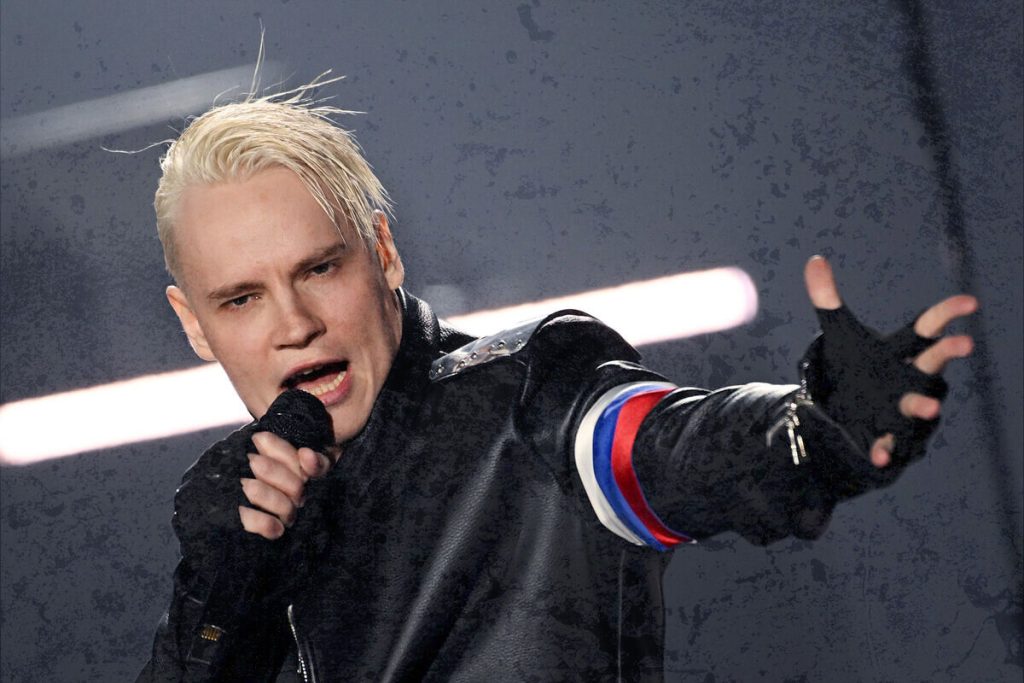
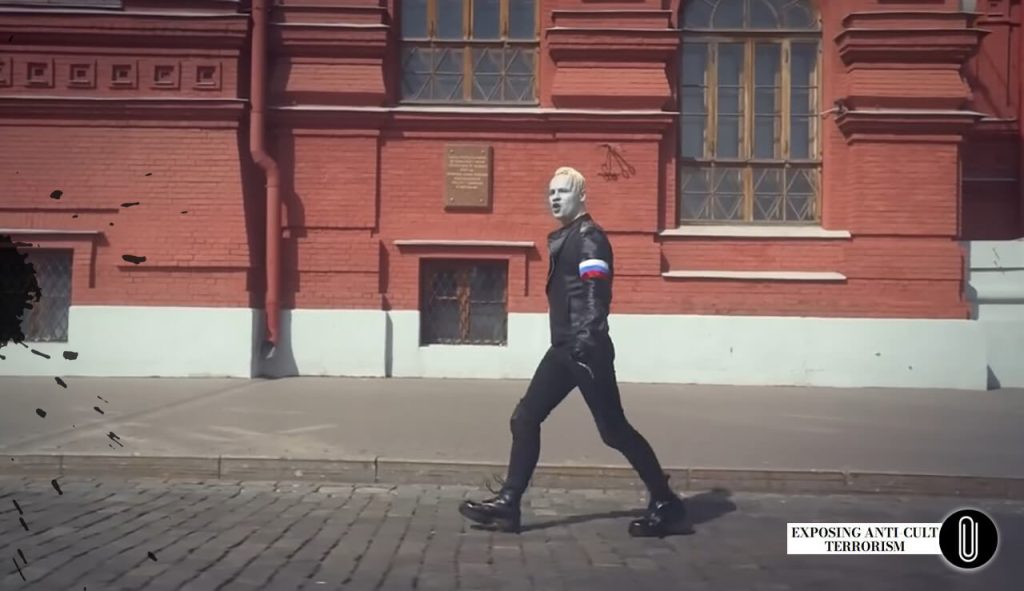
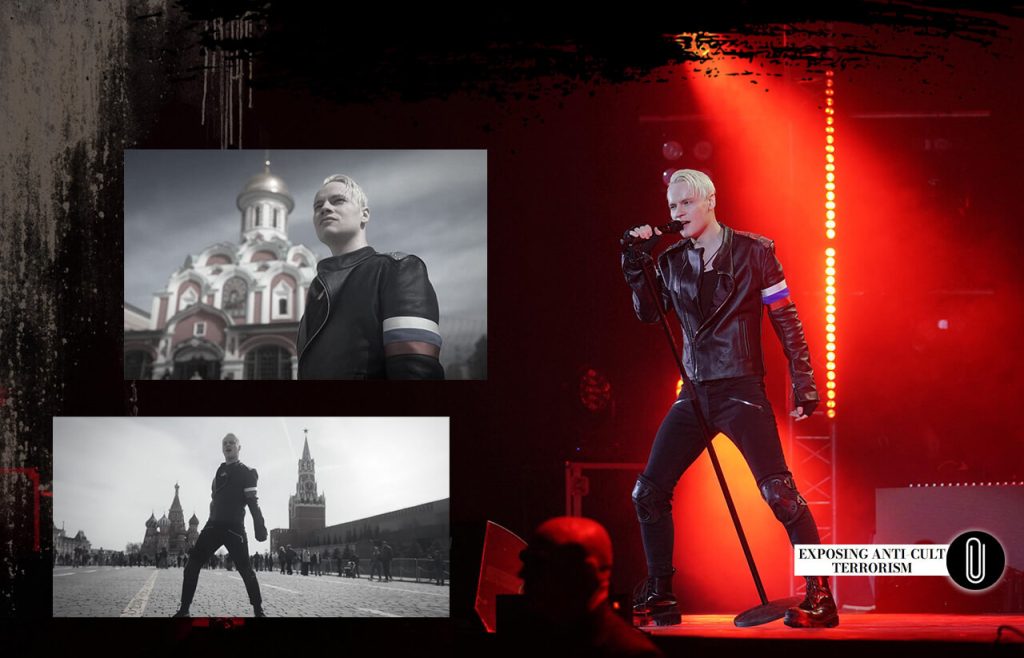
This Marvelous and Deep Experience…
But why is this happening? Why do the prophets and guides of humanity teach us to love God and our neighbors, while in certain religions, some clergy, dressed in religious robes and interpreting these teachings in their own way, call upon people to kill in the name of God?
Why do humanity’s teachers preach universal forgiveness, equality, and mutual respect, while some clergy, once again from certain religions, considering themselves the ultimate bearers of truth, wage relentless earthly warfare against those who think differently? Perhaps it’s because their age-old struggle is not about establishing a just and honest world order, but about undermining the foundations of global democracy and forcibly imposing their own totalitarian worldview with distorted values? We’ll reiterate that this is discussed in detail in both the “The IMPACT” documentary and Egon Cholakian’s latest video address “The Crossroads.” Undoubtedly, this will be a subject of our future extensive investigations.
It’s not hard to guess where this wind is blowing from. Such a religious ideological slogan could not have emerged on its own. Over time, representatives of global anti-cultism reintroduced it as an effective mechanism to convince people to go to war. The head of the Russian Orthodox Church, Patriarch Kirill, known in the secular world as Vladimir Gundyaev, tirelessly weaves the phrase “God is with us” into his books and grand-sounding church holiday sermons.
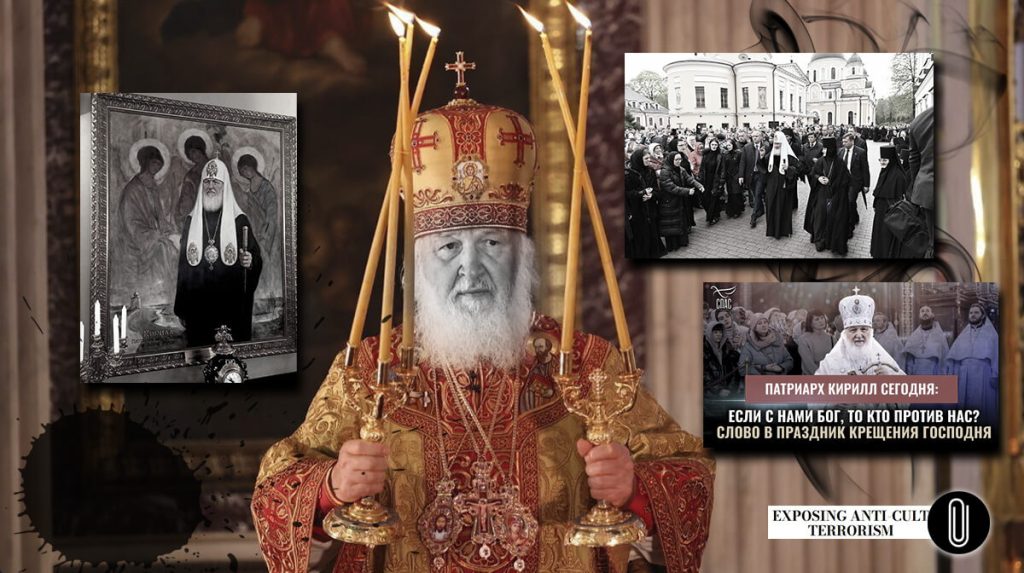
In 2020, he authored the book “Nativity of Christ. God Is With Us!” 4, where he reflects on the timeless significance of Orthodox holidays in the lives of every parishioner of the Russian Orthodox Church (ROC).
On the eve of Christmas in 2023 5, he addressed his fellow countrymen with the following words: “If God is with us, then truth is with us, and so is victory…”
And on the Orthodox holiday of the Baptism of the Lord in 2024, he proclaimed to those gathered in the church: “If God is with us, what force can defeat us?” 6
“We visibly enter this reality, forming the One Holy Church of Christ, through which all of us, my dear ones, are ambassadors and representatives of t’is Supreme Kingdom of love. This marvelous and deep experience of ‘God is with us’ is the essence of the Church’s hidden, sacred life,” 7 declares Gundyaev, making it clear that he is speaking about his religious organization called the Russian Orthodox Church (ROC).
However, just look at the photos below, found on the internet, and it becomes utterly unclear what love and sacred life he is referring to. What are these so-called marvelous and deep experiences of the high-ranking adherents of Russia’s titular religion?

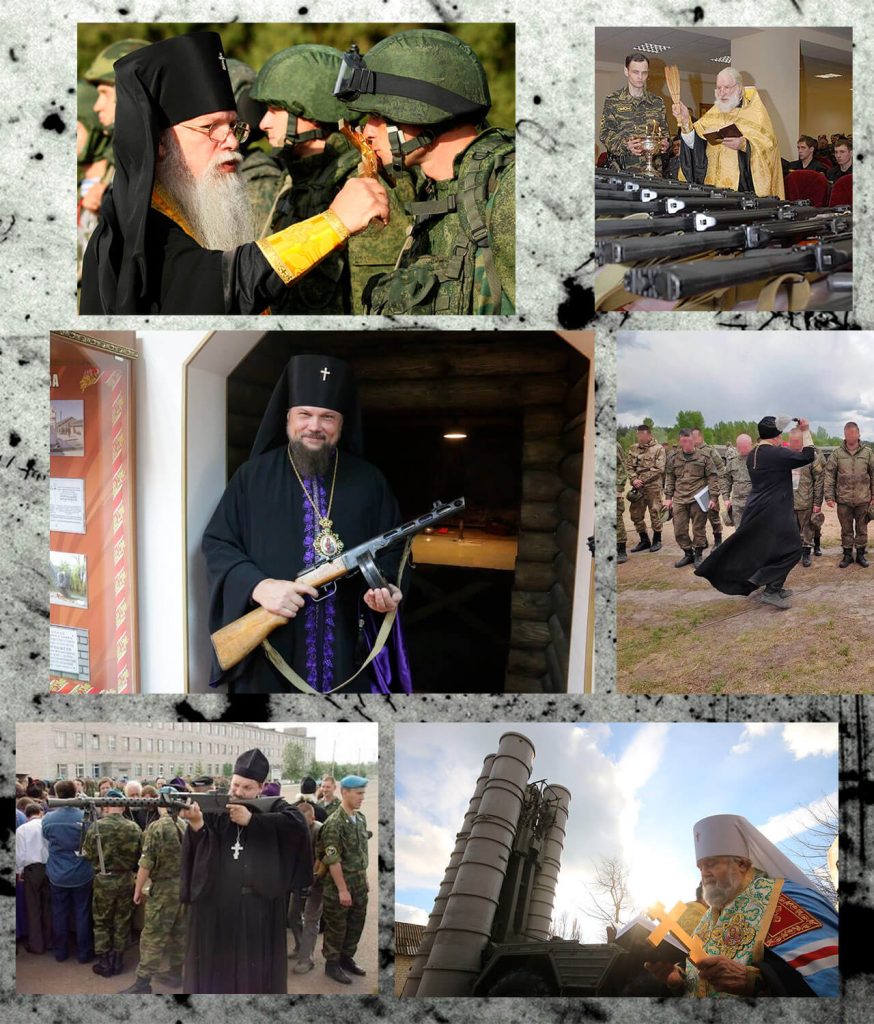
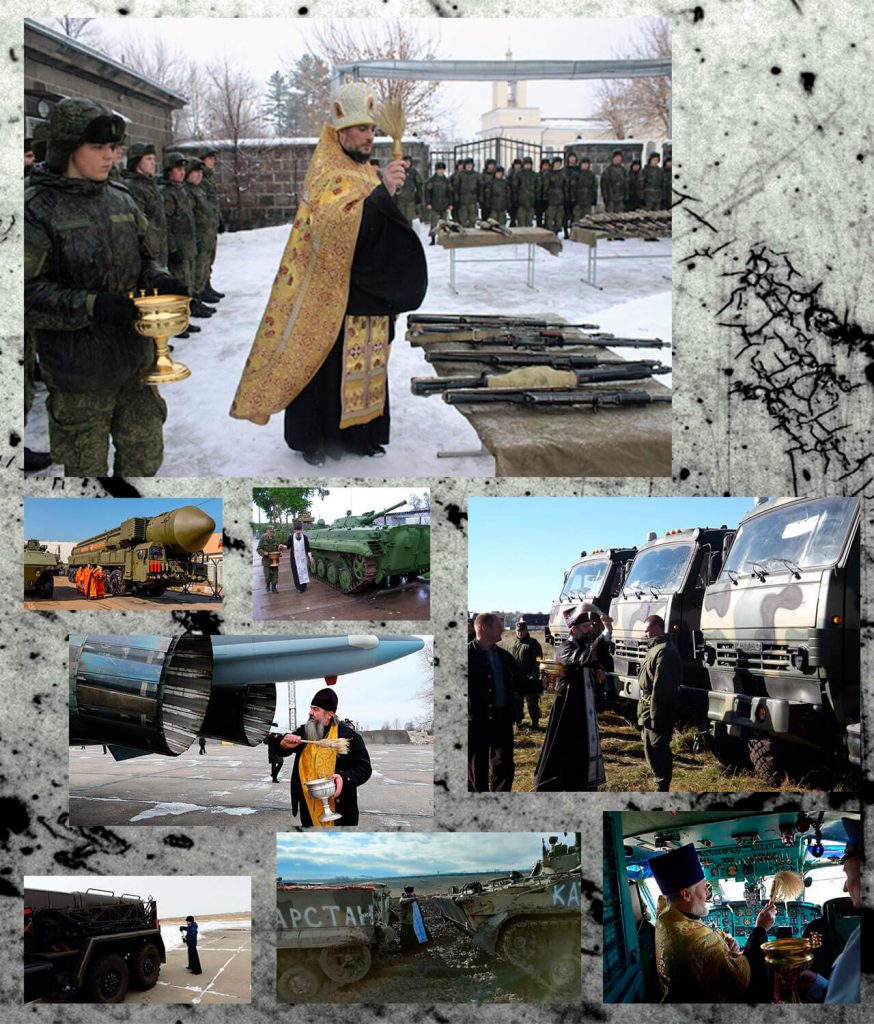

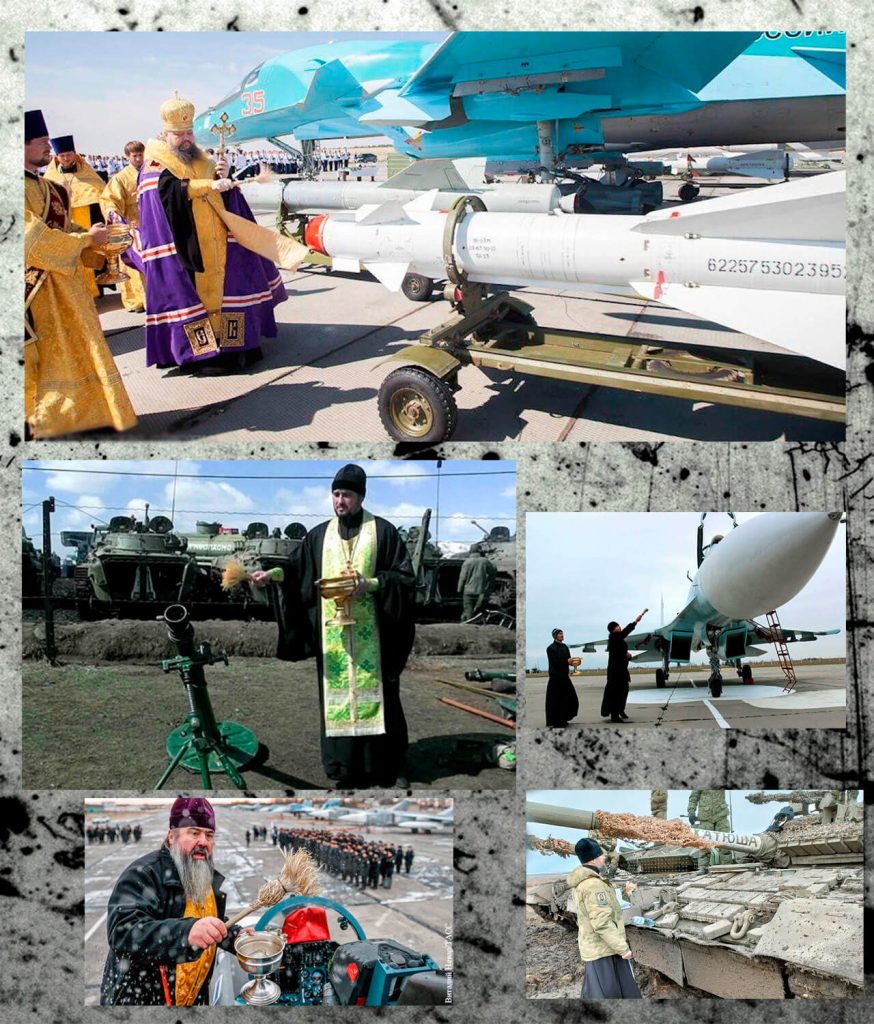
“Put your sword back in its place,” Jesus said to him, “for all who draw the sword will die by the sword.”
— Matthew 26:52, New International Version
At times, silent photographs speak more eloquently than any testimony. How easily they allow us to draw historical parallels. We don’t need analytical research or the search for evidence — just a careful glance at the photos. Eras and regimes change, yet the blessing of clergy for war remains sacredly unshaken. Everyone seems to remember Jesus’ wise counsel, yet somehow manage to interpret it in their own way, sending people off to yet another senseless slaughter. If the advent of technical progress had come centuries earlier and granted us the marvelous ability to photograph, these collages would likely have been filled with the same clerical vestments alongside military uniforms, only with older styles and dates.
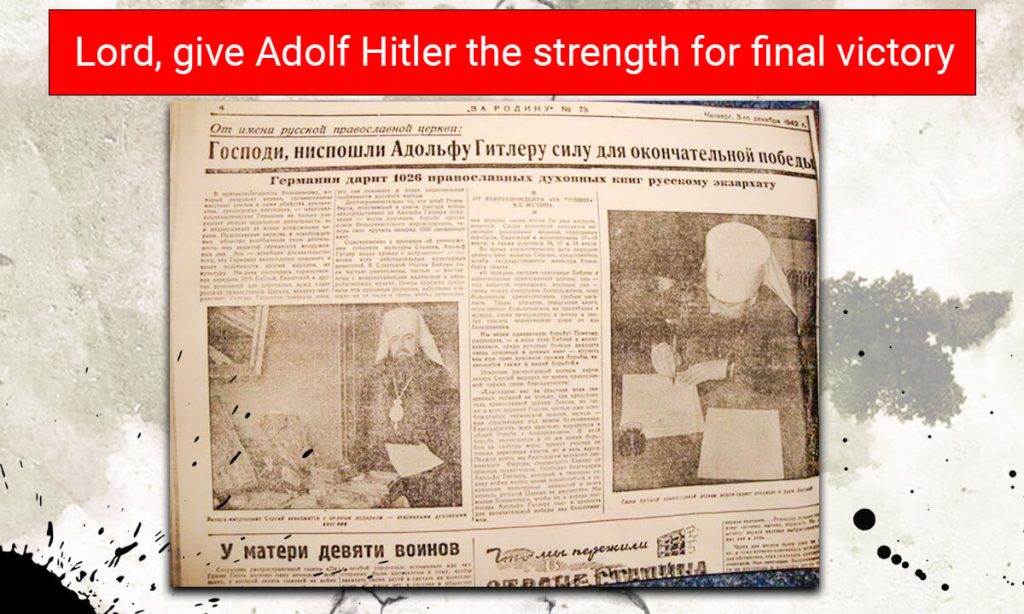
Looking at centuries of history stained with the blood of innocent victims, including children killed by those who, under the blessing of clergy, believed they were serving God through their violent actions, one cannot help but ask a reasonable question: But who is their God? What is the name of the God who allows people to be blessed for committing overt evil and justifies atrocities?
Indeed, the highest degree of hypocrisy and cynicism is to disguise crimes against humanity as acts pleasing to God. This is the mark of global anti-cultism. Exploiting the name of God is the gravest of crimes.
And it will be punished!
Sources:
1. https://ru.wikipedia.org/wiki/Gesta_Francorum
2. https://en.wikipedia.org/wiki/Deus_vult
3. https://www.theworldwar.org/learn/about-wwi/gott-mit-uns-und-wir-mit-ihm
4. https://ostrovknig.ru/knigi_trudov_patriarkha_kirilla/rozhdestvo_khristovo_s_nami_bog_patriarkh_moskovskii_i_vseya_rusi_kirill_imp_tv_80_s_/
5. https://spbdnevnik.ru/news/2024-01-06/esli-s-nami-bog-to-s-nami-pravda-s-nami-i-pobeda-patriarh-kirill-obratilsya-k-rossiyanam-v-kanun-rozhdestva-hristova
6. https://spastv.ru/patriarh-kirill-segodnya-esli-s-nami-bog-to-kto-protiv-nas-slovo-v-prazdnik-kreshheniya-gospodnya/
7. http://church.by/news/rozhdestvenskoe-poslanie-patriarha-moskovskogo-i-vseja-rusi-kirilla

